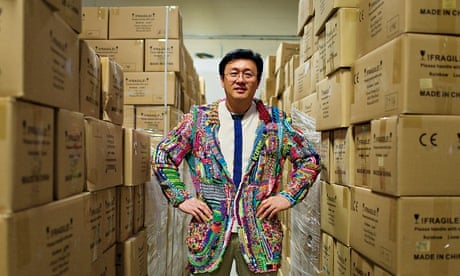Growing up in a small town in rural Malaysia, we did not have many toys. We had to be creative, so we built kites, played with sand and made jumping ropes from rubber bands. My father worked on my grandfather's rubber-tree plantation, and sometimes he would take me with him and show me the thick, white rubber milk that is extracted from the trees to produce natural rubber.
After school, I dreamed of becoming an engineer, but I could not get into my local university, because Malaysia's race-based quota system limits the number of ethnically Chinese students. Like many of my friends, I had to leave Malaysia to go to university.
My brother and I landed in Kansas on a snowy day in the spring of 1991. I had never seen snow before and barely spoke any English. I remember thinking: I am halfway round the globe; if I scream, nobody will hear.
A year after I graduated, the Asian economy crashed, and many of my friends back home lost their jobs. In 1997, the US economy was booming, and with a master's in mechanical engineering, it was easier to find a job in the US. So I forged a career in crash safety in Detroit's motor industry. I loved my job, but regretted not seeing my two daughters much.
They were nine and 12, and distant towards me. One night after work, I saw them making bracelets from rubber bands and I thought, "Hey, I know how to do this. Maybe I can impress you girls." I sat down and showed them how to link the rubber bands together, using the same technique we had used to make jumping ropes back in Malaysia. But the bracelets kept falling apart. I went down to my basement, grabbed a scrapboard and stuck multiple rows of pushpins into it. Then I started linking the bands in a zigzag, like a diamond shape, and it worked really well.
The next day, my daughters took a bunch of colourful bracelets to school. I became a neighbourhood hero overnight. Children would come up to me and ask me to make them bracelets. It was my older daughter, Teresa, who first suggested selling them. I spent six months developing the product and designed 28 different versions. I was still working full-time at Nissan, so I would stay up until three or four o'clock every morning.
The biggest challenge was to convince my wife. I am the one in the family with all the crazy ideas, and she is my reality check. She always has the final say. One day, I made a ring out of rubber bands and put it on her finger. After that, she was on board.
We invested our entire family savings of $10,000 (£6,152) to order tooling and 2,000lb (907kg) of rubber bands from China, and assembled the kits ourselves in our garage. I spent months going round toy stores in Michigan with my daughters, trying to sell the loom band. Nobody was interested. The problem was that people didn't understand how they worked. So I asked my niece and my daughters to create YouTube videos, explaining how to make rubber-band bracelets. These created a trend.
In July 2012, I received an order from a toy store in Alpharetta, Georgia, for 12 loom-band kits. Less than two weeks later, the same store placed an order for $10,000. When my wife and I saw it, our jaws dropped. We thought it was a mistake. The store owners told us they had never seen anything like it. After that, our sales climbed every month until, in December 2012, we reached $200,000 wholesale sales a month. I took a three-month sabbatical from Nissan, but never returned to my old job.
The journey has been magical, but there have been many challenges. Once, our supplier made a mistake and delivered 10,000 metal hooks that were all bent in the wrong shape. I had to hammer every single hook into shape, which took a whole year. Last year, we sold more than $40m worth of rubber-band bracelets. I expect to double that this year.
Seeing the royal family and Pope Francis wear the rainbow loom was unreal. I looked at the pictures and thought to myself: "Wow, that was started from our dining room table."
As told to Solvej Krause
Do you have an experience to share? Email experience@theguardian.com

Comments (…)
Sign in or create your Guardian account to join the discussion